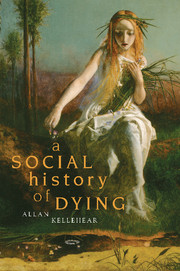Book contents
- Frontmatter
- Contents
- Acknowledgements
- Introduction
- Part I THE STONE AGE
- Part II THE PASTORAL AGE
- Chapter Four The Emergence of Sedentism
- Chapter Five The Birth of the Good Death
- Chapter Six The Second Challenge: Preparing for Death
- Part III THE AGE OF THE CITY
- Part IV THE COSMOPOLITAN AGE
- Conclusion
- Bibliography
- Index
Chapter Five - The Birth of the Good Death
Published online by Cambridge University Press: 22 September 2009
- Frontmatter
- Contents
- Acknowledgements
- Introduction
- Part I THE STONE AGE
- Part II THE PASTORAL AGE
- Chapter Four The Emergence of Sedentism
- Chapter Five The Birth of the Good Death
- Chapter Six The Second Challenge: Preparing for Death
- Part III THE AGE OF THE CITY
- Part IV THE COSMOPOLITAN AGE
- Conclusion
- Bibliography
- Index
Summary
The ‘birth’ of the good death had continuities with or similarities to its predecessor – dying as otherworld journey – but it also displayed important differences. Awareness and anticipation remained important matters for the dying person as well as his or her kin. To be caught unawares is at best unfortunate and at worst, tragic. Self-awareness of encroaching death became the first feature of a ‘good’ death because it signalled to others an important social characteristic of the person. A person who could tell he or she was dying had clearly learnt the wisdom of dying from their experience of omens, spells, spirit signs or simply from having witnessed many previous deaths of fellow villagers.
The illnesses that commonly swept village life had patterns of medical symptoms that could be recognised by any witnesses who had seen them several times before. Smallpox (the virus Variola major), for example, described by Hopkins (1983) as ‘the greatest killer’ of humanity, enjoyed a three-week course of human destruction. In the first week one hardly noticed any symptoms at all. But by day 9 the symptoms and signs would line up in a most stark and predictable way – headaches, fever, chills, nausea, and backache. This would be followed soon after by a scarlet discoloration spreading from the face to the rest of the body. Then came the rashes.
- Type
- Chapter
- Information
- A Social History of Dying , pp. 87 - 104Publisher: Cambridge University PressPrint publication year: 2007



